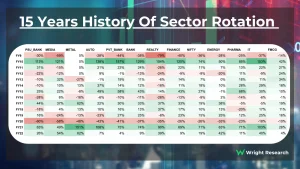
What is the role of Public Expenditure in public finance? This question has often vexed economists and policymakers. While the concept of public expenditure has a long history in public finance, it remains somewhat misunderstood, especially when viewed in the context of the economic cycle. To explain why this is so, we must first take a closer look at government spending in the past.
The study of public expenditure refers to the systematic arrangement of state expenditure according to a defined economic basis. The basic principle of public expenditure is that it is the sum of all resources consumed by the government for state functions. It occupies an important place in the study of public finance because it is an indicator of overall fiscal discipline. Public expenditure varies across countries and can be used to manage aggregate demand. The principles of public expenditure are similar to those in the field of economics.
While the size of government spending varies, it generally ranges between five and fifteen percent in Europe. Government expenditure, on the other hand, can range from thirty to fifty percent in most African countries. In general, governments rely on the private sector to produce goods and services. Hence, it is important to keep in mind that the role of public expenditure in public finance cannot be overestimated. In other words, public expenditure should be aimed at social benefits, not specific groups.
The process of budget allocation is fundamental to public finance and is critical in understanding the role of government in society. In addition to distributing resources, budget allocation is key to economic stability. The goal of the PEMNA is to facilitate practical knowledge on public expenditure management. In the past, laissez-faire economics argued that leaving money in private hands would lead to better returns. Today, governments are increasingly using public spending to purchase goods and services and to improve long-term growth perspectives.
In many instances, the government may spend more than it has earned by way of taxes. This may create a downward spiral of economic activity, lowering the value of the public sector’s currency. Public expenditure in public finance aims to address the problems of inequality in the distribution of income and wealth among the country’s people. While the goal of government spending is to increase the economic activity of the country, it must be done in the public interest.
OECD data on government spending provides information by country. Public expenditure per capita is measured as a share of GDP. Some countries that are not members of the OECD do not report comparable data. The cross-country variation is persistently large. For example, in India, public expenditure per head is only about 1,800 US dollars per year. By contrast, Norway spends over 30,000 US dollars per capita in the same year.
While individual and corporate spending habits are highly personalized, public expenditure is more likely to be influenced by the government’s economic policies. Private and public spending must be balanced in order to maximize social benefit. However, it is important to note that the government’s economic policy can influence how much public expenditure the country has. The government should always make its budgeting decisions rationally, and avoid spending beyond its means. A public spending policy that balances its costs and benefits will be the most beneficial for the society.








